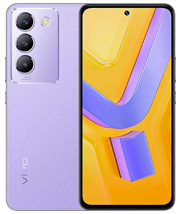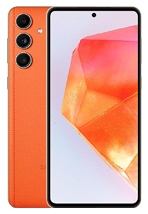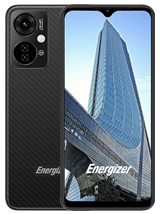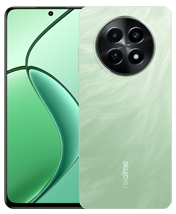This is our helpful guide in getting yourself a reliable smartphone that can last for a decade.
Buying a smartphone every six months or every year is expensive. Also, budget models depreciate quickly because of their low-end hardware parts. So, in this article, we’ll give you several factors to consider before buying a phone – a buy that could last for 5 to 10 years.
Disclaimer: A futureproof smartphone is only a concept and unlikely to become a reality in the near future. This article only shows what factors that may affect a phone’s longevity. We are not claiming that the factors below are absolute or must be followed strictly.
Flagship Processor
A flagship processor is obviously available in flagship smartphones. But sometimes, manufacturers roll out upper mid-range models with flagship chipsets.
The reason why they are called flagship chipsets is their long-lasting performance. Even if their benchmark scores are no longer at the top of the food chain, their performance remains strong four or more years after launch.
Keep reading to learn how to get such a processor without buying a brand-new top-tier phone.
Battery Capacity
Batteries are getting bigger but by the looks of things, we’re currently locked at 5000mAh. This is already a good capacity level, though you can go for as low as 4000mAh.
Some devices have battery features like STAMINA mode, Adaptive Battery, and power saving exclusions for apps. They are not perfect but they can certainly help keep your phone going throughout the day.
Beware of fast charging because it usually heats up the phone quickly, which negatively affects the battery. The main issue is the heat, not the speed of charging itself.
IP Certification
Getting any degree of IP rating may spare your smartphone damage from accidental drops, splashes, and even submersion. It will act as a shield for your smartphone that may last for a few years before it wears off. If the device isn’t consistently exposed to these hazards, the protection may last longer. Check out the ratings below.

Audio Features
We sometimes spend time listening to music or watching movies, so of course, sounds matter. Here are some audio features you may want to have on your phone:
| Audio Features | Reasons to Have It |
| 3.5 mm headphone jack | A direct port for most wired earphones and headsets. Get the maximum benefits of audio immersion. |
| Low-latency wireless audio | A feature to lower the delay of audio when gaming with wireless audio accessories. |
| Surround sound engine | Add one or more channels for a more realistic audio experience. |
| Hi-Fi Quad DAC | Lower distortion and noise when a digital audio file is converted into a real sound. |
Software Updates
Software updates are crucial in the overall health and performance of your phone. It’s recommended to buy a model that can get at least two major software versions while several years of security patches.
Updates may also have bug fixes and improvements that can smoothen the UI, speed up the loading time of apps, resolve problems on the camera app, and even eliminate technical problems like bootloop.
Display
Right now, 1080p is the preferred display resolution – a nice balance between great visuals and battery life. You can go for 2K or 4K resolution but that means more cost and higher battery consumption. Although uncommon these days, some smartphones have a built-in display scaler that gives users a choice between 720p, 1080p, and 2K resolution. It can even work on installed games.
Other display features also to consider include:
- Refresh rate: Defines the frame rate and display’s smoothness.
- Touch sampling rate: Defines the speed of the display’s response to every tap.
- Peak brightness: Defines the maximum brightness of the screen.
- PWM dimming: Defines the protection against screen flickering.
Storage
For camera lovers, storage is a big deal with those pics and vids from everyday captures. However, a smartphone can have three types of storage: the onboard, the expansion, and the cloud.
An onboard storage between 256GB and 512GB is good, while having an expansion card slot of up to 2TB is much better. But cloud storage is something greater since it doesn’t have physical limitations. So, what are the common downsides of each:
| Onboard Storage | Card Expansion | Cloud Storage |
| Files are at risk of getting wiped if the phone must be reset. | Files are at risk of getting corrupted if the card fails. | Files are at risk of security breach if the provider is hacked. |
| Files may slow down the phone’s performance if the device starts to run out of space. | Loading files depends on the read and write speed of the card. | Files require internet connection to be accessed. |
| Big storage sizes are expensive initially. | Authentic memory cards are very expensive. | Big storages need monthly or yearly subscription fees. |
Connectivity
Wireless connectivity is becoming the norm in many cities. Thus, a smartphone with support for various wireless technologies is a must. Your internet connection will also depend on some of them:
| Wireless Technology | Yes | No |
| 5G mobile connectivity | If there are towers near you. | If you don’t use mobile data often. |
| Wi-Fi 5GHz | If you want faster download and upload speeds. | If you’re just browsing or doing light tasks on your device. |
| NFC | If you’re into wireless transactions. | If your area isn’t ready yet for contactless transactions. |
Cooling
Heat is the number enemy of smartphones. So, it’s not a bad idea to get a phone with dedicated cooling hardware.
It doesn’t matter if it’s a heat pipe or vapor chamber, as long as it can help dissipate it will cool the device when it’s hot. But between the two, vapor chambers are preferred.
Managing the device’s temperature can maintain its peak performance for several years.
Modularity
Modularity or the ability to separate and combine hardware parts is a proof-of-concept that gained widespread attention in 2013. Today, a Dutch electronics brand has made this concept a reality.
Consider a modular phone because you can upgrade some of the hardware parts, including the battery, camera, and display. It’s like buying a new part for an aging smartphone to bring back its youth.
Final Words
Getting a powerful processor is the priority for it’s the heart of the device. But there’s a workaround if you want one without cashing out a lot.
If your budget is 10K, you can certainly get a brand-new mid-range smartphone, which may last up to five years depending on your usage. That same amount can also get you an old flagship, around two to three years old, but it’s more powerful than that mid-range phone and can last for up to 10 years since its release.
To cut the price, buy a second-hand flagship phone or a new one without the box and accessories. Just make sure to discuss everything with the seller first. Many of them are selling legit units online.
Another thing is the transaction should be cash on delivery, but in this case, sending the money through a payment app after the device comes to you and you’re satisfied. Riders won’t accept more than 2K as COD payment these days.
Remember to be wise and vigilant when buying online.















